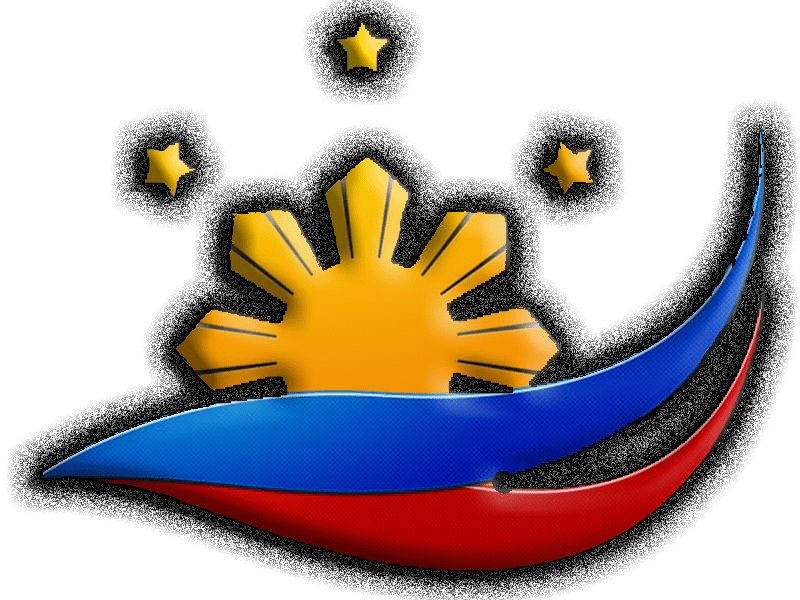Travel Guide
Philippines
The world's second-largest archipelago with over 7000 islands.
wildlife and beaches make it an absolute paradise.






Food & Cuisine
Embark on a savory journey through Filipino cuisine, a blend of indigenous flavors, Spanish influences, and hints of Chinese and American traditions.
Culture & Tradition
Philippine culture exuberantly celebrates diversity and warmth. The nation’s dynamic spirit is showcased through traditional dance, vibrant festivals like the Ati-Atihan Festival, and traditional attire such as the Barong Tagalog and Baro’t Saya.
Religion & Beliefs
As Asia’s sole predominantly Christian nation, the Philippines reflects the lasting impact of Spanish colonization through well-preserved churches and vibrant religious festivals.


Weather In Philippines
The Philippines, a tropical paradise, experiences two primary seasons: the dry season spanning from December to April and the wet season from May to November. It’s noteworthy that certain islands may exhibit the opposite weather pattern. Generally, it’s advisable to steer clear from July to October due to the possibility of typhoons, adding an element of nature’s unpredictability to the mix!










As a travel guide, here’s How I Can Help
Values I Can Add To Your Trip
The Philippines, a nation that consistently captivates, boasts more than 7,000 islands, each presenting its distinctive piece of paradise. Envision yourself on a Philippines getaway, discovering secluded islands, feeling the sand beneath your feet, surrounded by palm trees and pristine waters.
Plan your trip to the Philippines
Careful planning is essential for traveling in the Philippines due to the multitude of islands. We suggest dedicating a minimum of three weeks to fully experience the country.


Coastlines and beaches over 7000+ islands in the Philippines
With thousands of islands and over 35,000km of coastline, the Philippines offers a wealth of world-class, pristine, white sandy beaches, and crystal-clear waters. Whether you’re exploring well-known hotspots or discovering hidden gems, dive into the excitement of island life and immerse yourself in the enchanting beauty of the Philippines’ captivating shores.




Best time to travel to the Philippines
The key to a dream getaway in the Philippines lies in perfect timing! With two distinct seasons in this tropical haven, it’s important to note that the weather can vary significantly between islands.


Familiar Words
Hello / Greetings
Mabuhay
Thank You
Salamat
Excuse Me
Pasensya na po
Some Genuine Words From My Clients
Kudos to your travel guide for efficient planning and organization! They ensured we covered all the must-see spots without any hassle. The well-structured itinerary allowed us to make the most of our time in the Philippines, and we had a blast!


Lara Smith
Our travel guide struck the perfect balance between adventure and relaxation. From adrenaline-pumping activities to serene moments on picturesque islands, every day offered something new. It was a well-rounded and fulfilling vacation!


Shirley Paul
Thanks to our travel guide, we discovered hidden gems in the Philippines that we would have otherwise missed. Their local knowledge led us to unique spots, making our trip more enriching and unforgettable. A truly magical experience!


Rita Beck




Frequently Asked Questions
With 7,631 islands, the Philippines abounds in exceptional destinations, from captivating rice terraces and thrilling hiking trails to renowned surfing spots and exceptional diving opportunities. Notably, the country boasts mesmerizing tropical beaches adorned with palm trees, pristine white sand, and vibrant blue waters.
The Philippines stands out as an affordable and enticing island getaway! Whether you’re seeking luxury or budget-friendly options, you can plan to spend between $180 and $350 USD. Opting for overnight ferries and buses, indulging in delectable street food, and staying in hostels can help keep costs down.
While tap water in Manila is generally deemed safe, locals often opt for other sources due to personal preferences. In the rest of the Philippines, it is advisable to choose filtered water. To reduce plastic usage and stay hydrated during your Philippine vacation, consider bringing a reusable water bottle with a built-in filter.
Exciting news! For stays up to 30 days, most nationalities can enter visa-free, provided they have proof of an onward ticket and at least six months validity remaining on their passport. This allows you to explore the stunning archipelago without any hassle. Please verify the latest requirements with your embassy.
The Philippines predominantly uses Filipino and English as its main languages. Filipino is a fusion of standardized Tagalog and words from diverse Philippine languages, serving to unite communities across the archipelago. Experience the warmth of hospitality through the greeting “Mabuhay!” which translates to “live” in this exceptionally friendly nation.
Certainly! Travel insurance guarantees a worry-free trip by providing coverage for unexpected medical expenses and trip disruptions. With this safety net in place, you can concentrate on enjoying your island-hopping adventures in this breathtaking country.
Contrary to media depictions, the Philippines is, for the most part, a secure travel destination. It is advisable to steer clear of Mindanao and the Sulu archipelago in the southern part of the country due to potential terrorism. However, the majority of the country is welcoming and safe. Prioritize caution and acquaint yourself with travel safety guidelines before embarking on your adventure.
In the Philippines, power outlets accommodate type A, B, and C plugs. Type A and B are the same as those used in the USA, while type C is the standard plug in Europe. Given these three options, it’s advisable to bring an international plug adapter to ensure you can charge your devices seamlessly throughout the country.
The Philippines captivates people with its mesmerizing beauty, showcasing diverse landscapes of pristine beaches, limestone cliffs, hidden lagoons, and vibrant wildlife across the archipelago. The genuine warmth of the Filipino people, recognized as among the friendliest in Asia, contributes to an unforgettable and welcoming experience for travelers.




Important Updates
Best time to explore the Philippines
The perfect timing is crucial for a dream getaway to the Philippines! Although this tropical paradise experiences two distinct seasons, the weather can vary significantly from one island to another.
Dry Season (December to April): Considered the optimal time to visit the Philippines, this period is perfect for beach outings, island hopping, and outdoor activities, featuring temperatures ranging from 24 to 31 degrees Celsius. Keep in mind that it’s the busiest season, especially from March to May, with a peak in tourist influx and prices.
Wet Season (May to November): Commencing around May/June and concluding around October/November, the wet season brings brief rain showers, often followed by pockets of sunshine. However, July to October marks the typhoon season, characterized by heavy rainfall and winds, necessitating caution to avoid travel disruptions.
Regional Variations: Certain regions, such as El Nido and Siargao, exhibit distinct weather patterns, experiencing two entirely different seasons simultaneously. It’s advisable to check island-specific forecasts before planning your holiday in the Philippines.
Food, culture and religion in Philippines
Known as the ‘Pearl of the Orient Seas,’ the Philippines transcends its reputation as a tropical paradise; it embodies a lively blend of food, culture, and religion, offering an unforgettable experience for travelers.
Food: Embark on a culinary adventure and tantalize your taste buds! Filipino cuisine seamlessly blends indigenous flavors with Spanish influences, incorporating hints of Chinese and American culinary traditions. Iconic dishes like adobo and cassava cake narrate tales of heritage and local ingredients. The Philippines also boasts a vibrant street food scene; indulging in barbeque skewers, sweet halo-halo, and banana Q from lively markets is a must for any food enthusiast.
Culture: The Philippines’ culture celebrates diversity and warmth. Traditional dance, vibrant festivals like the Ati-Atihan Festival, and traditional attire like the Barong Tagalog and Baro’t Saya reflect the nation’s dynamic spirit. Respect, family, and hospitality are deeply ingrained in Filipino culture, and you’ll often witness gestures of admiration, such as the traditional “mano,” where younger individuals show respect to their elders by taking the elder’s hand and placing it on their forehead.
Religion: With the majority of the population being Christian, the Philippines stands as the only predominantly Christian country in Asia. The influence of Spanish colonization is evident in beautifully preserved churches and religious festivals. Religious devotion is a vibrant part of Filipino culture, from the grandeur of the Basilica del Santo Niño in Cebu to the celebration of the Penafrancia Festival in Naga.
Travel Safety Guidelines for the Philippines
Contrary to common misconceptions, the Philippines is generally a safe destination for tourists, with locals recognized as some of the friendliest and most welcoming in Southeast Asia. The following information aims to assist travelers in maximizing their adventure through the Philippines.
Crime and Safety in the Philippines: Like any destination, the Philippines may encounter instances of petty theft. Secure your valuables, avoid isolated areas at night, and stick to well-lit, populated spots. Maintain vigilance and follow common-sense safety measures for a trouble-free experience.
Certain areas, such as Mindanao and the Sulu archipelago, should be avoided due to potential terrorism concerns. Check your government’s travel advice before your Philippines vacation to ensure you choose safe areas to visit.
Natural Disasters: The Philippines is prone to earthquakes, volcano eruptions, typhoons, and heavy flooding, especially during the wet season. Register with your embassy for emergency updates and familiarize yourself with evacuation procedures in case of unforeseen events.
Driving: Road conditions can be poor, and driving can be chaotic, so always exercise caution. While renting motorbikes is common, it is advisable to do so only on the islands and not in cities. Prioritize safety by wearing a helmet and protective clothing and ensuring you have excellent travel insurance. Exercise extra vigilance during the rainy season, as road conditions can be slippery.
Drugs: The Philippines has strict laws regarding drugs, and penalties for possession can be severe. Possession of any amount of an illicit drug can lead to a mandatory jail sentence or even more severe punishment.
Travel Insurance: Prioritize your safety by purchasing comprehensive travel insurance before your holiday in the Philippines. Unforeseen incidents, such as medical emergencies, flight cancellations, or lost baggage, can occur, so secure the best travel insurance for your trip.








